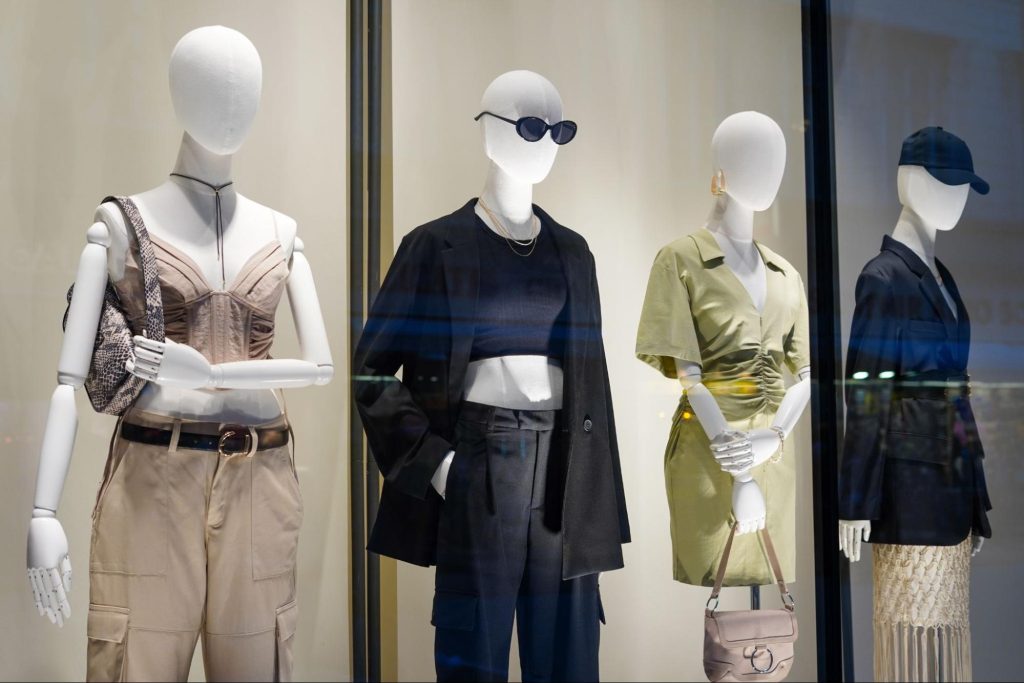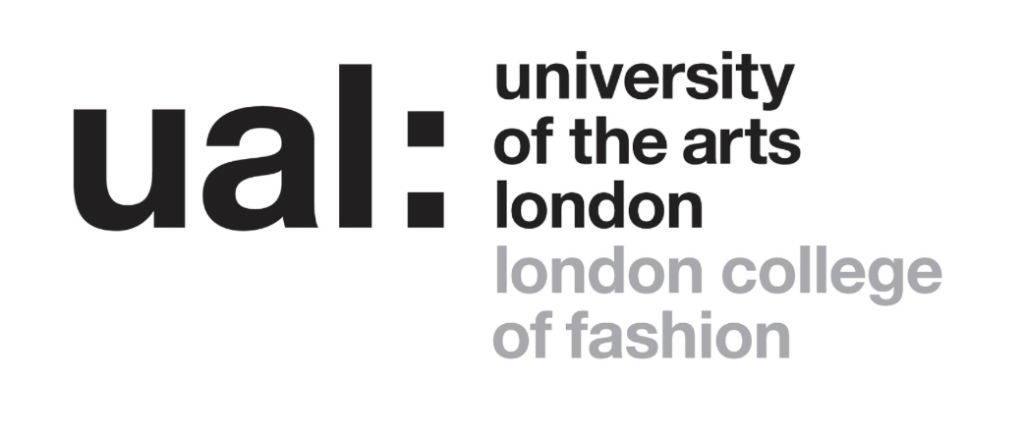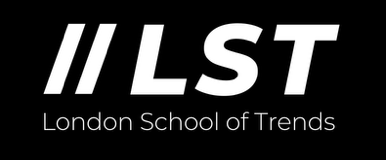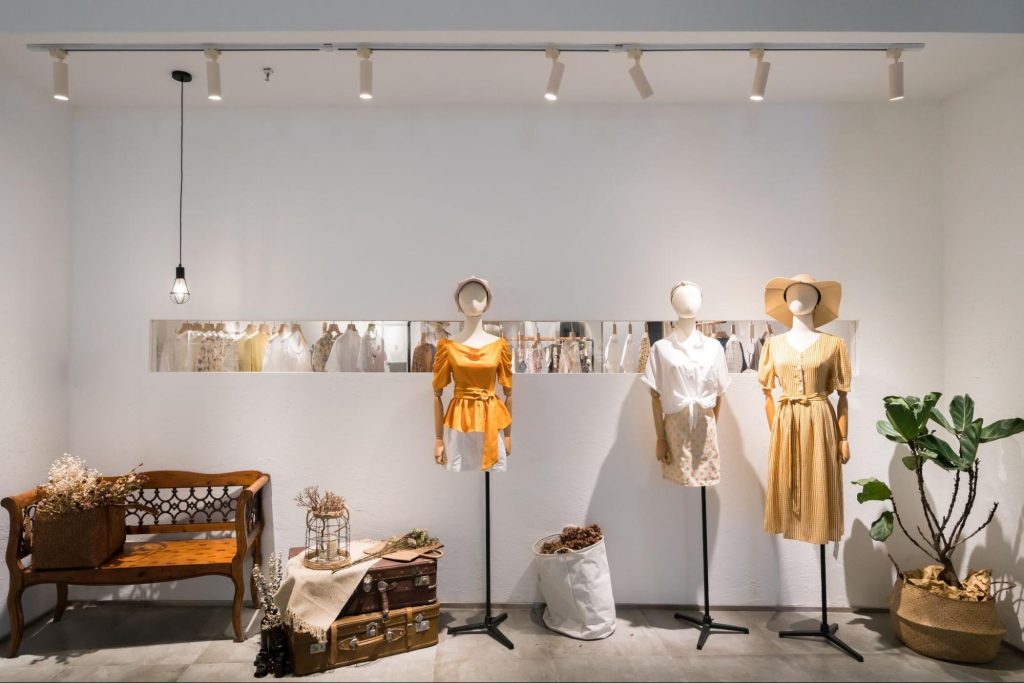Looking to launch a career in visual merchandising? Check out our pick of the top five visual merchandising courses that’ll help you train up and launch a career in this exciting and creative field
Visual merchandisers work closely with brands and retail outlets to arrange and present products in shop windows and stores, showcasing items in their best light, drawing customers in, enhancing the shopping experience, and, ultimately, boosting sales. It’s an impactful and creative role that requires in-depth knowledge of human psychology, shopping trends, retail design, sales, and store layout. If you’ve ever walked past a beautiful or enticing shop window display and thought “I’d love to create something like that”, then a career in visual merchandising could well be for you.
If you’re considering a move into this career, where do you start? Some visual merchandisers work their way into the role via other retail, fashion, or interior design routes. However, there are numerous courses available that teach visual merchandising to those with no previous experience in the field, providing the theory and practical application needed to succeed. If that sounds like something you’re looking for, then you’re in the right place.
In this article, we’ve put together a list of the top visual merchandising courses available in the US that’ll help you launch an exciting career in this industry. From Parsons School of Design to the London College of Fashion, we run through the curriculums, learning formats, cost, and duration of each course to help you make an informed decision about where to study. Finally, we’ll be running through important parameters to consider, such as admission requirements and accreditation, that will determine if a course is right for you and your specific career goals.
Here’s what we’ll cover:
- Top courses in visual merchandising
- Visual Merchandising – The New School, Parsons School of Design: School of Fashion
- Visual Merchandising and Display Online Short Course – London College of Fashion
- Visual Merchandising Course for Fashion Retail – Digital Fashion Academy
- Visual Merchandising Online Course – London School of Trends
- Visual Merchandising Certification – New Skills Academy
- Parameters to consider while exploring visual merchandising courses
- Conclusion
Let’s dive in!

Top courses in visual merchandising
We’ve compiled all the details of the best visual merchandising courses in the US, both off- and online so you can find the right study program for you.
1. Visual Merchandising – The New School, Parsons School of Design: School of Fashion

Parsons School of Design is a private art and design college in New York City known for having taught some of the biggest names in the fashion industry, including Alexander Wang and Donna Karan. Founded in 1896, the school is one of the oldest educational establishments for art and design in the city and was one of the first to offer a range of design programs, including fashion design. In 1970, Parsons became one of the divisions of what is now known as The New School, a private research university in New York.
Parsons School of Design’s five-month Visual Merchandising Course taught by Marcie Cooperman explores the concepts and practices of visual merchandising. Students learn about creating in-store displays, designing layouts, and optimizing lighting, as well as how to use different strategies to strengthen a brand’s image and engage with customers. They are also taught how to conduct store analyses, generate comprehensive reports, and apply different merchandising techniques in both online and offline environments.
- Duration: 2.5 hours per week over 5 months
- Format: In-person teaching at the New York City campus
- Fees: Approx. $7,000
2. Visual Merchandising and Display Online Short Course – London College of Fashion

A constituent college of the University of Arts London, the London College of Fashion is a public art university based in Stratford, East London, UK, that boasts notable alumni including shoe designer Jimmy Choo. The college offers a range of arts-based programs including undergraduate and postgraduate study, short courses, and business training in fashion and retail.
The Visual Merchandising and Display Online Short Course is designed to teach students a different element of visual merchandising each week. Students are assigned projects such as creating window displays or designing store layouts, demonstrating their skills using digital design tools. Whether learning how best to use color or techniques for styling mannequins, students have the chance to onboard the core skills of the visual merchandiser while building a portfolio that can be used to impress potential employers and clients.
- Duration: 1.5 hours per week for 6 weeks
- Format: Online (class times are in GMT)
- Fees: £440
3. Visual Merchandising Course for Fashion Retail – Digital Fashion Academy

Calling itself the “global knowledge platform for fashion professionals”, the Digital Fashion Academy offers a range of courses in fashion management and e-commerce that teach students strategies, best practices, and tools used by experts in the fashion world.
The Digital Fashion Academy’s Visual Merchandising Course for Fashion Retail created by leading visual merchandising expert Monica Minervini supports students hoping to launch visual merchandising careers and business owners looking to enhance the performance of their stores.
Students learn the key strategies used by visual merchandisers, explore the psychology of shopping, and get to know the tried and tested methods to boost customer engagement, enhance sales, and elevate a brand’s visual identity. Upon successful course completion, students receive a certificate outlining their achievement.
- Duration: 5.5 hours
- Format: Online video lessons with teacher engagement via the platform
- Fees: $300 (installment payment option also available)
4. Visual Merchandising Online Course – London School of Trends

Founded more than two decades ago in the UK capital, the London School of Trends offers in-person, hybrid, and online experiential courses in fashion, makeup, and design. The school offers a holistic, modern, and tech-enabled approach to learning, and provides a wide range of courses that nurture a passion for the arts and push the boundaries of creative excellence.
The Visual Merchandising online course taught by industry insider Sarah Manning is designed for beginners in the field and teaches the fundamentals of design, branding, and display techniques. Through applied learning, interactive research assignments, and quizzes, students gain a deep understanding of how a brand’s visual identity drives customer interest and enhances sales. By the end of the course, students have a strong foundational knowledge of the visual design techniques used to attract and retain customers in a commercial setting.
Students who successfully complete the program receive a diploma certificate which can be used to support job applications in the field.
- Duration: 4 weeks (with access to materials for up to 12 months)
- Format: Online, pre-recorded lectures
- Fees: €362.00
5. Visual Merchandising Certification – New Skills Academy

Launched in 2013, New Skills Academy is an online course provider that aims to support students in building and nurturing their careers. They offer flexible study options, certified courses, and online support in a range of subjects from dog grooming through to child psychology.
The Visual Merchandising Certification course from the academy gives students a comprehensive overview of the principles and methodologies of this impactful field with a particular emphasis on how it works within a traditional retail environment. While the main focus of the course is visual merchandising, students can apply their learnings to exhibition design, interior design, e-commerce, and event planning, too.
In addition to learning theoretical aspects of visual merchandising, students also learn practical aspects of the industry such as:
- How to use planograms
- Crafting effective visual branding
- Presenting in-store sales campaigns
- Creating seasonal displays
With easy-to-digest modules, end-of-course certification, and lifetime access to course materials, this is a great introduction to the field for beginners on a budget.
- Duration: 12 hours
- Format: Text and image-based materials
- Fees: €120

Parameters to consider while exploring visual merchandising courses
When reading the details of visual merchandising courses, it’s important to consider a range of different parameters to ensure you select the right course for your knowledge level, career goals, budget, and learning style.
1. Admission requirements
While it’s certainly not always the case, some visual merchandising courses require students to show proof of specific qualifications in visual merchandising or related fields before allowing them to enroll. Be sure to check the admission requirements of each course carefully before applying to ensure you have the documents needed.
Bear in mind that admission requirements can be a good indicator of how advanced a course is. While short courses or beginner courses are unlikely to require proof of skills or knowledge, more advanced courses like degree or master’s programs may wish to ensure a certain level of existing knowledge or experience from prospective students before allowing them to enroll to ensure they can keep up with the work.
2. Accreditation
Accreditation varies from program to program. Some courses provide students with a grade, a certificate, and an industry-recognized qualification, while other courses don’t offer any formal accreditation or acknowledgment. When comparing courses, it’s important to consider what your long-term goals are and whether you need accreditation in order to attain them.
While employers and clients in this field will be particularly interested in your proven skills and experience over formal qualifications, higher education or degree programs as well as corporate organizations will likely want to see formal certification of your skill level, too.
3. Course details and duration
It’ll be important to consider how many hours per week a course is likely to require from you, whether it’s available on or offline, if it’s part-time or full-time, and over how many weeks, months, or even years it may run.
In addition, you’ll need to think about whether you can afford to study a course without working alongside it and whether the duration of the course fits into your longer-term career plans.
Luckily, these days, many courses offer a few different study options to enable those with other commitments to take part, but this isn’t always the case. Be mindful of what is realistic for you to achieve within a given timeframe before deciding on a program.
4. Curriculum
The course curriculum is an outline of the topics you’ll be studying and the projects you’ll be expected to work on. It’s a good idea to study a course’s curriculum closely before signing up, bearing in mind any topics you’re hoping to specialize in later. This is a good time to check that the course’s curriculum covers the themes you’re interested in.
Another aspect of the curriculum to look into is the percentage of theory-based modules compared to the percentage of applied or project-based work. If it’s important for you (and your career goal) to get some hands-on experience, you’ll want to choose a course that offers plenty of real-world projects that help build up your practical skills. However, if you’d like to strengthen your understanding of visual merchandising history and theory, you’ll need to select a course that supports deep learning and knowledge-building instead.

5. Fees and funding
As we’ve seen in our curated list, visual merchandising courses have a broad range of different price points. It’s crucial to consider your budget before signing up for a course as well as any funding options or payment plans available. If a course is part-time or flexible, you may be able to continue working while you study, too.
6. Work experience or placement opportunities
Some institutions support students in finding work experience, internships, or placement opportunities thanks to partnerships with local firms or student career services. If getting hands-on experience in a real-world setting is important to your career goals, then this is definitely something to consider when choosing a course. While some students are happy to secure work experience for themselves, others may feel more comfortable being part of a program in which this opportunity is built into the curriculum.
Conclusion
We hope you’ve found our list of the top visual merchandising courses in the US a valuable resource. Whether you’re simply interested in how visual merchandising works or you’re looking to make a complete career U-turn and find a new role in the industry, there’s a course out there for every type of learner.
Be mindful of your curriculum requirements and desired learning outcome before committing to a course and you’ll be well-placed to get the most out of the visual merchandising course you choose.
Next Steps
If you’d like to learn more about visual merchandising or other careers in design, head back to the AND Academy Design Blog. We also recommend you check out this project by AND Learner, Vinay Prajapati to get inspiration for your next interior design project.
In case you need further assistance, here are some resources to consider:
- Watch this session by Snehanshu Mukherjee, Founding Partner at T.E.A.M and Mansi Almadi, an Interior Designer at Studio Lotus
- Talk to a course advisor to discuss how you can transform your career with one of our courses.
- Check out our Interior Design courses – all courses are taught through live, interactive classes by industry experts.
- Take advantage of our scholarship and funding options to overcome any financial hurdle on the path of your career transformation.
Note: All information and/or data from external sources is believed to be accurate as of the date of publication.









